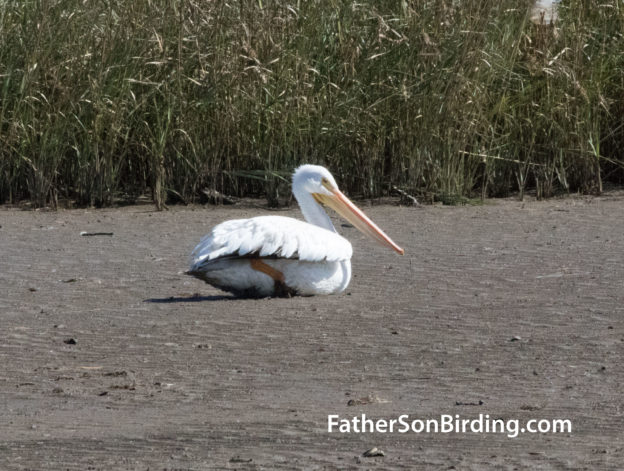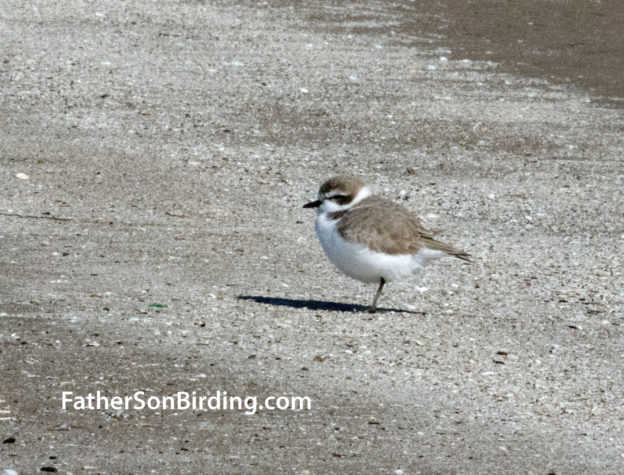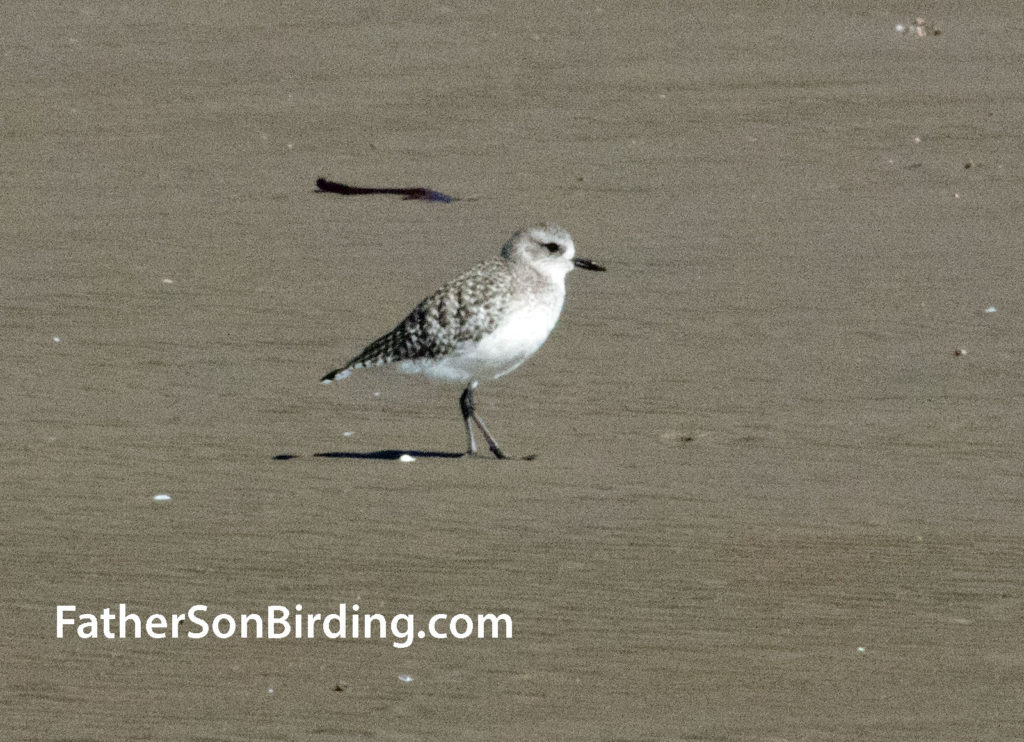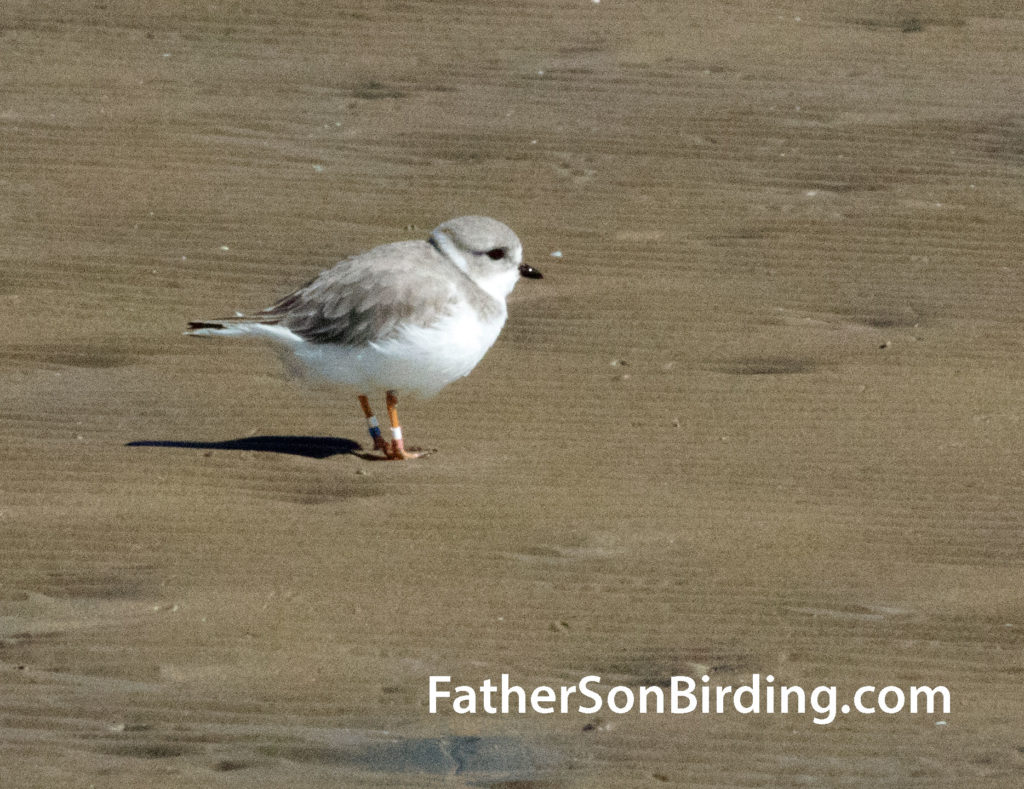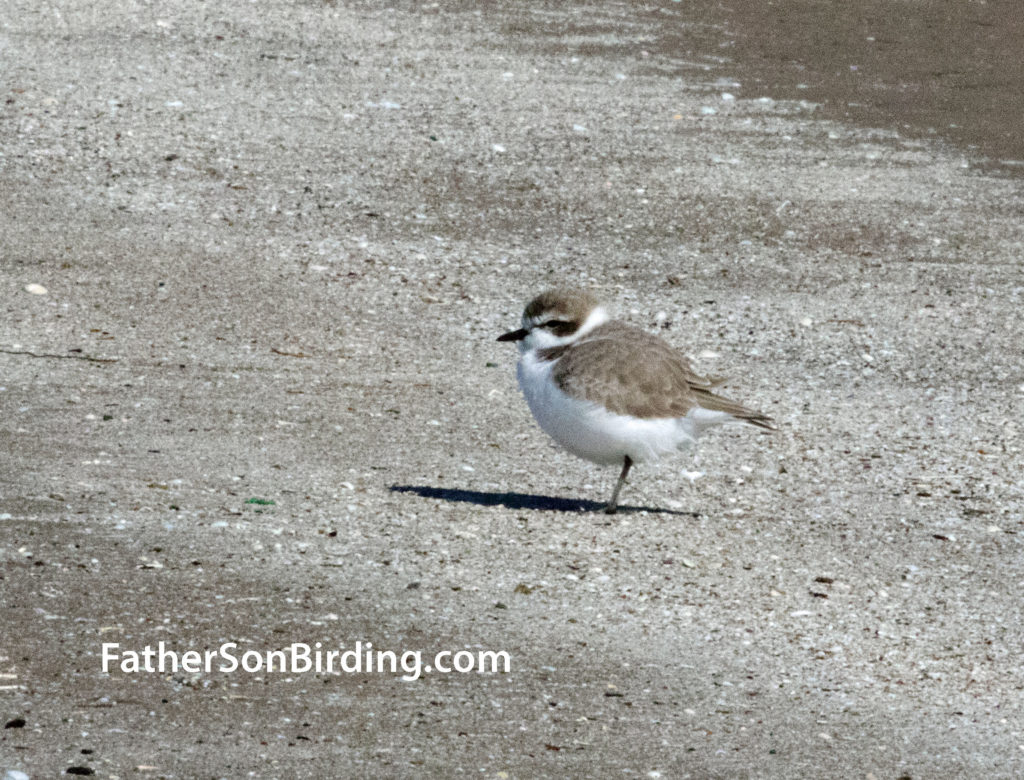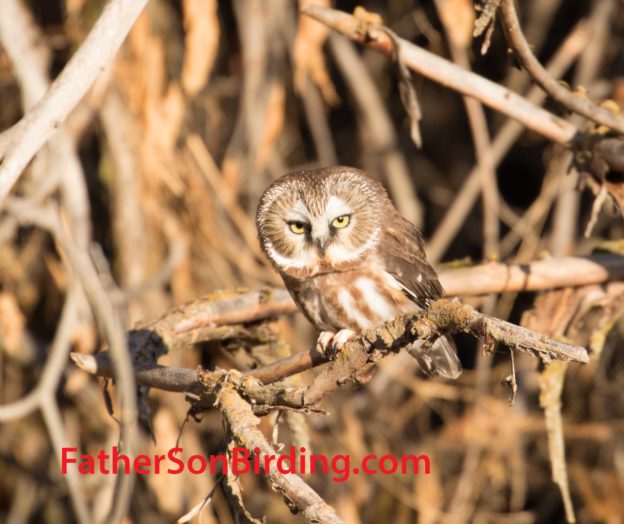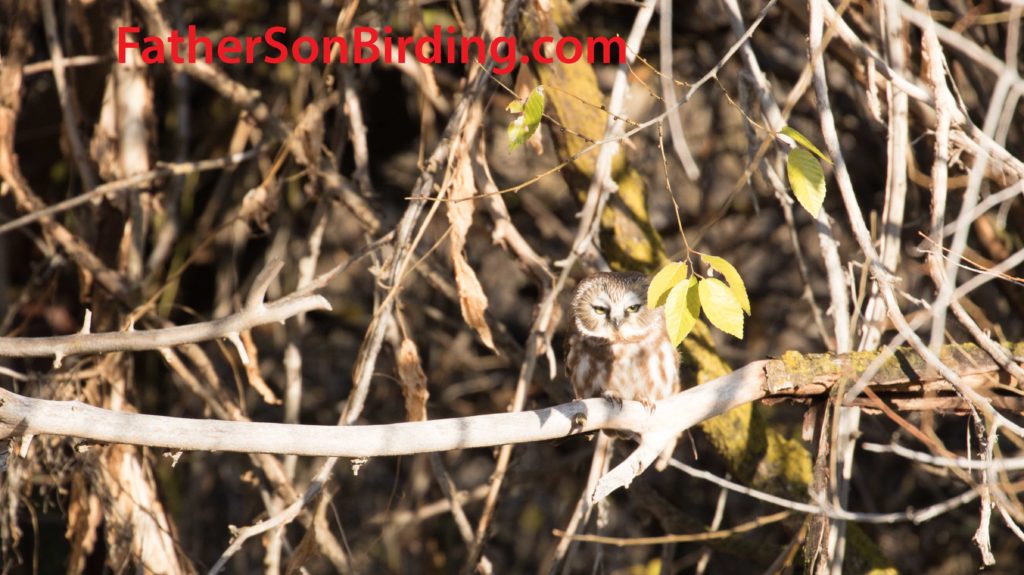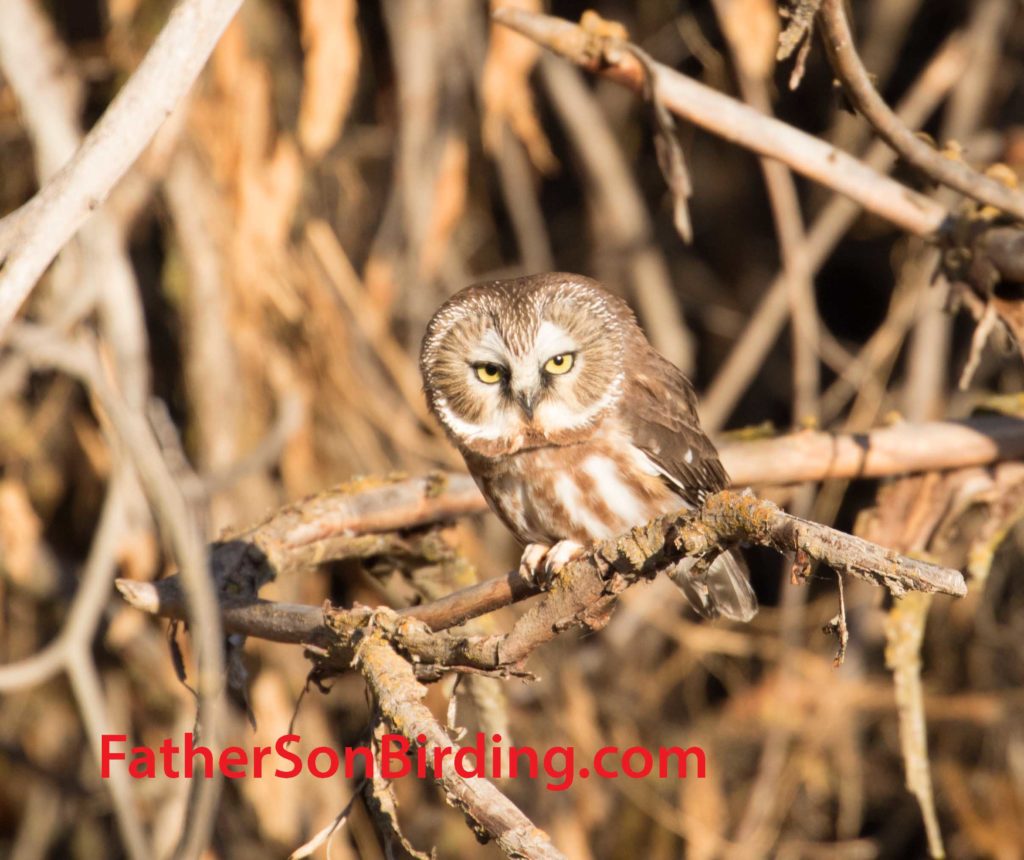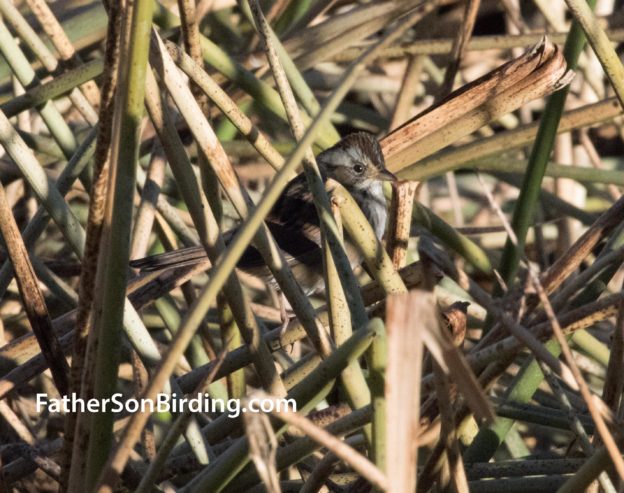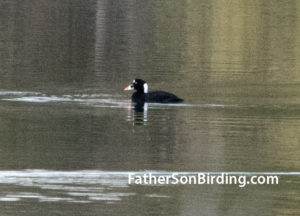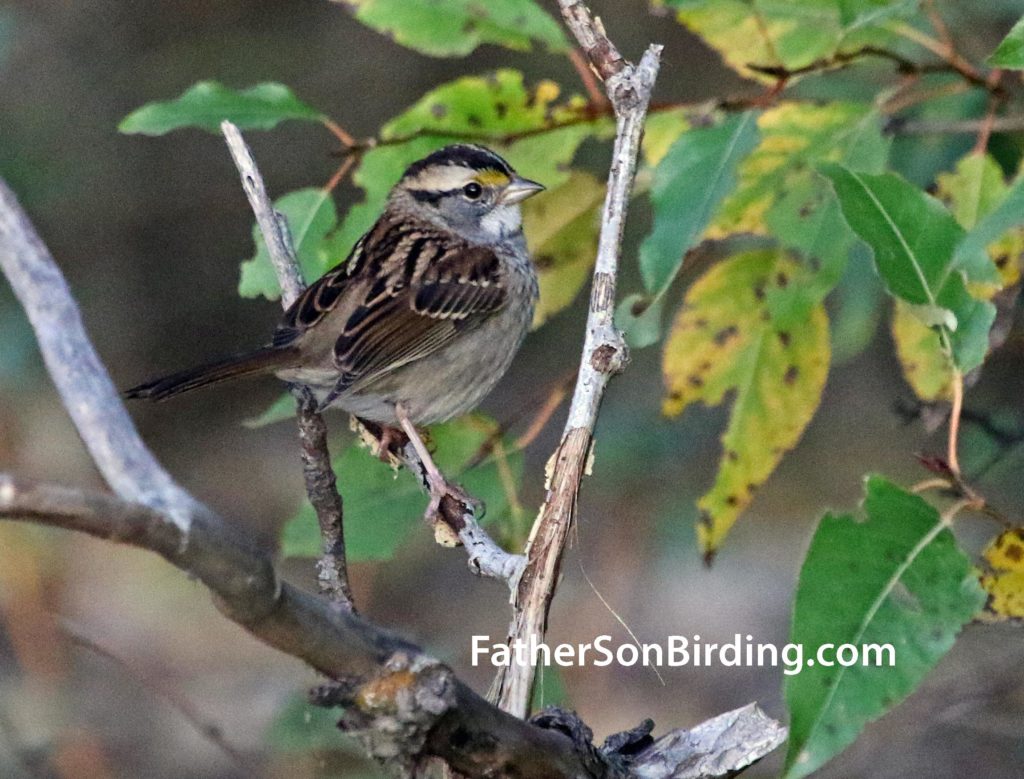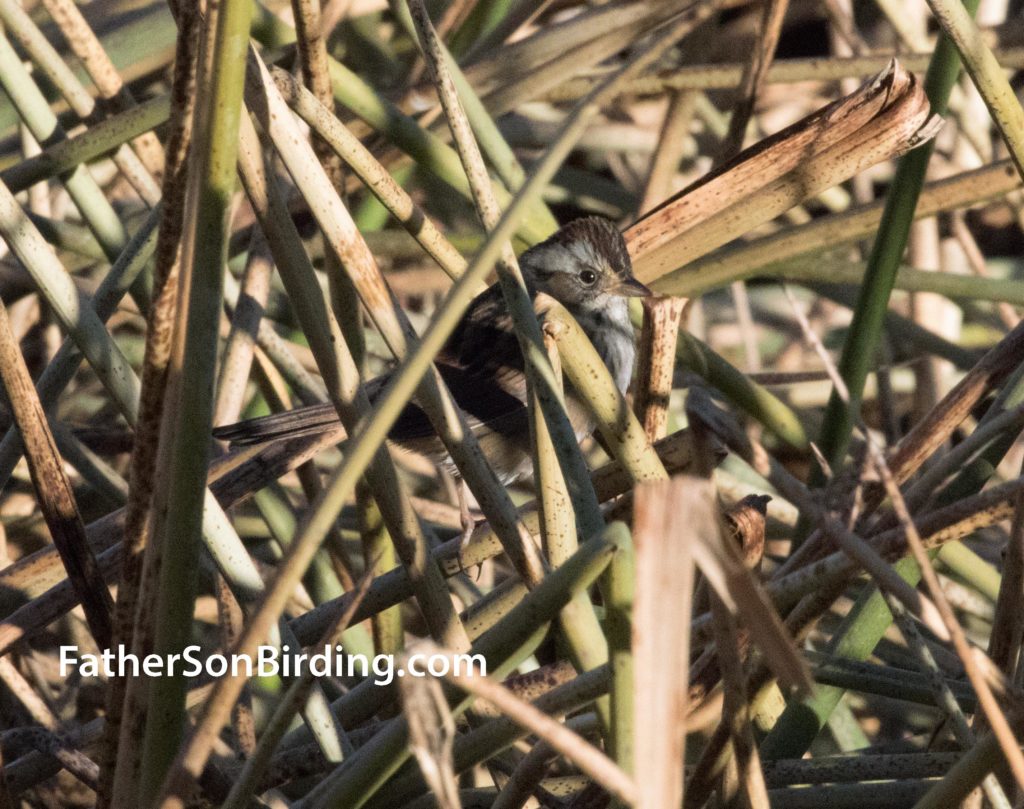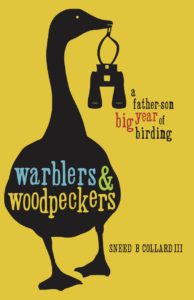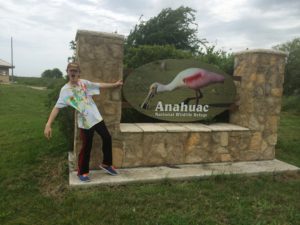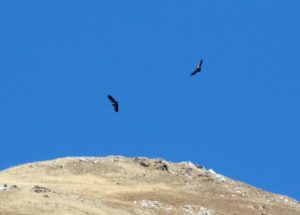To subscribe to our posts—and nothing else—please scroll down to the appropriate boxes in the column to the right.
My last post dealt with my recent experiences observing plovers on Texas’s Bolivar Peninsula, but that same afternoon began a more poignant adventure. Continuing walking west along the beach of the Houston Audubon Society’s Bolivar Flats Shorebird Sanctuary, I approached the shipping channel into Galveston Bay. As I followed the curve of the shore to my right, I spotted an unlikely sight: a lone White Pelican sitting in the mud.
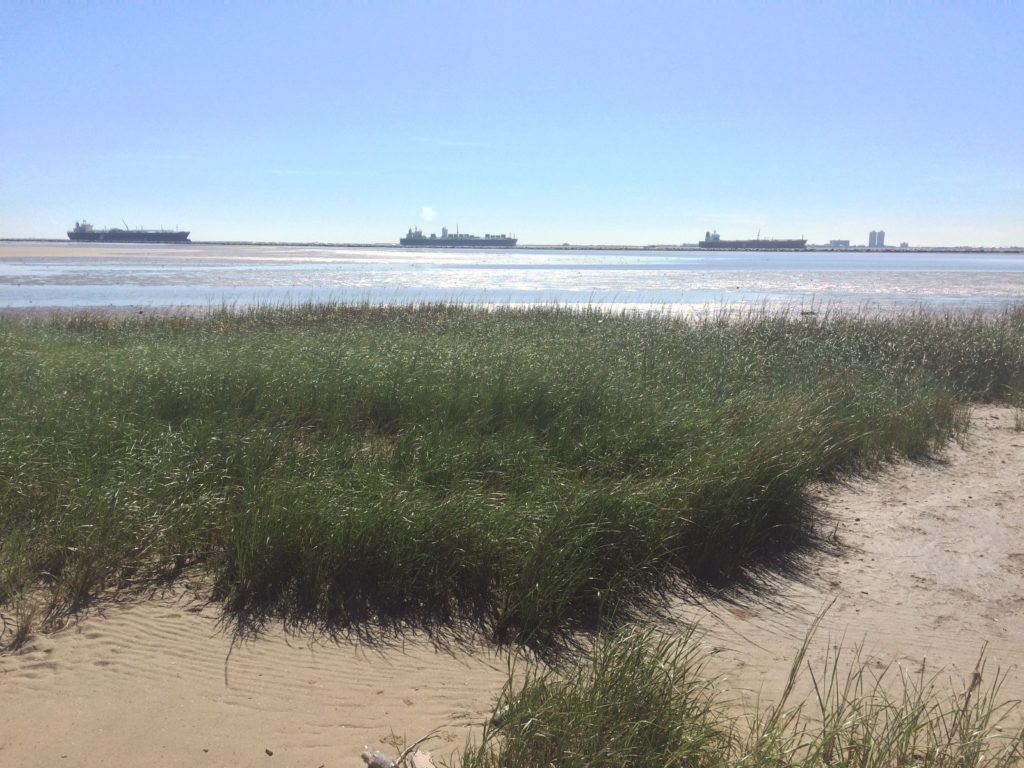
Bolivar Flats, one of Texas’s most important seabird sanctuaries, sits adjacent the busy shipping channel into Galveston Bay.
“Hm, that’s strange,” I thought. “I almost never see White Pelicans sitting alone—or in such vulnerable positions.”
As I drew closer, however, the pelican raised itself to its feet and I saw the problem: its legs were tangled in fishing line.
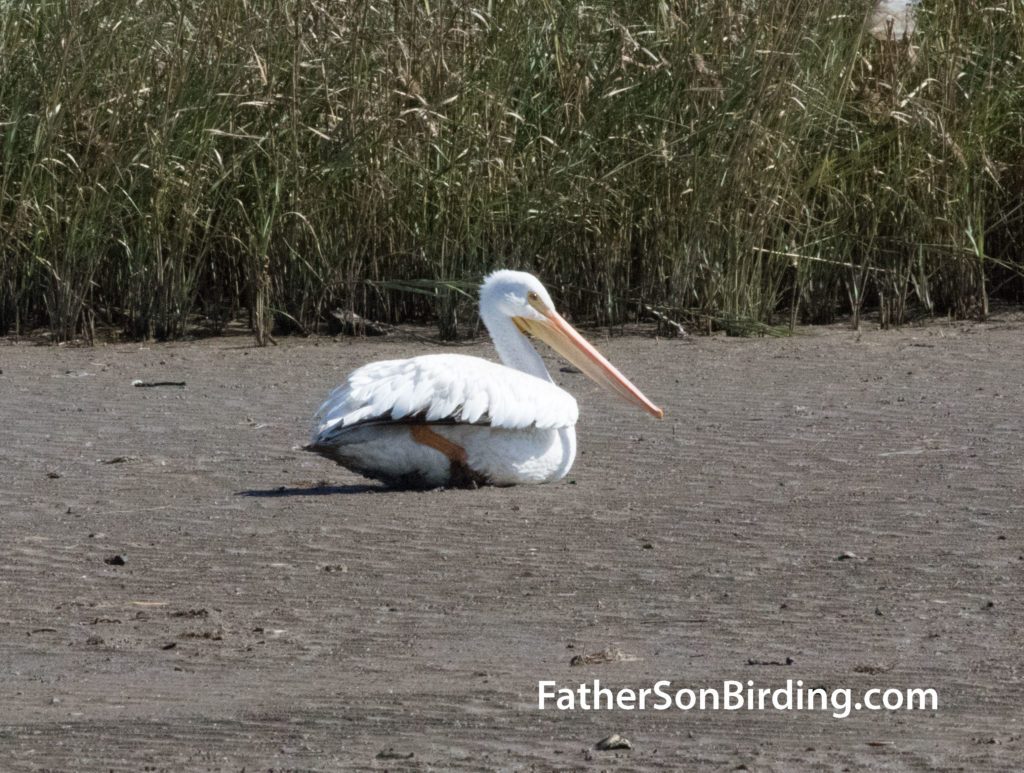
I was suspicious when I approached this White Pelican just sitting alone on the mud.
My heart sank as I debated what to do. Thanks to TSA security restrictions, I didn’t have a pocket knife on me, not to mention anything to throw over the bird’s head to calm it down. Also, pelicans are BIG. “That thing could seriously injure me if I did the wrong thing,” I thought. Feeling helpless and sad, I finished my walk and returned to the car.
Back at my hotel in Houston, however, I decided to see if there was any help available. Earlier, I had met three young employees of the Houston Audubon Society who lived at High Island. I called HAS and left a detailed message about the pelican’s predicament and location and asked if the High Island crew might go out there to free it.
To my astonishment, I got a prompt email from HAS Development Director Meredith Segal, who told me she had relayed my message to their Coastal Sanctuary Manager, Pete Deichmann, who would try to locate the bird. Having done all I could do, I crossed my fingers and went to bed.
The next day, as I stayed busy with speaking and book signing duties, I received another amazing message from Meredith. It read:
“I wanted to update you on the white pelican saga! Pete, our Conservation Specialist found the pelican and cut off the fishing line. He said there were three hooks stuck in her and she wasn’t able to fly. When he cut the line off of her, she was a bit stunned and didn’t take off. He will check on her again later to see if she is still there or if she was able to take off. She at least has a chance now because of you!”
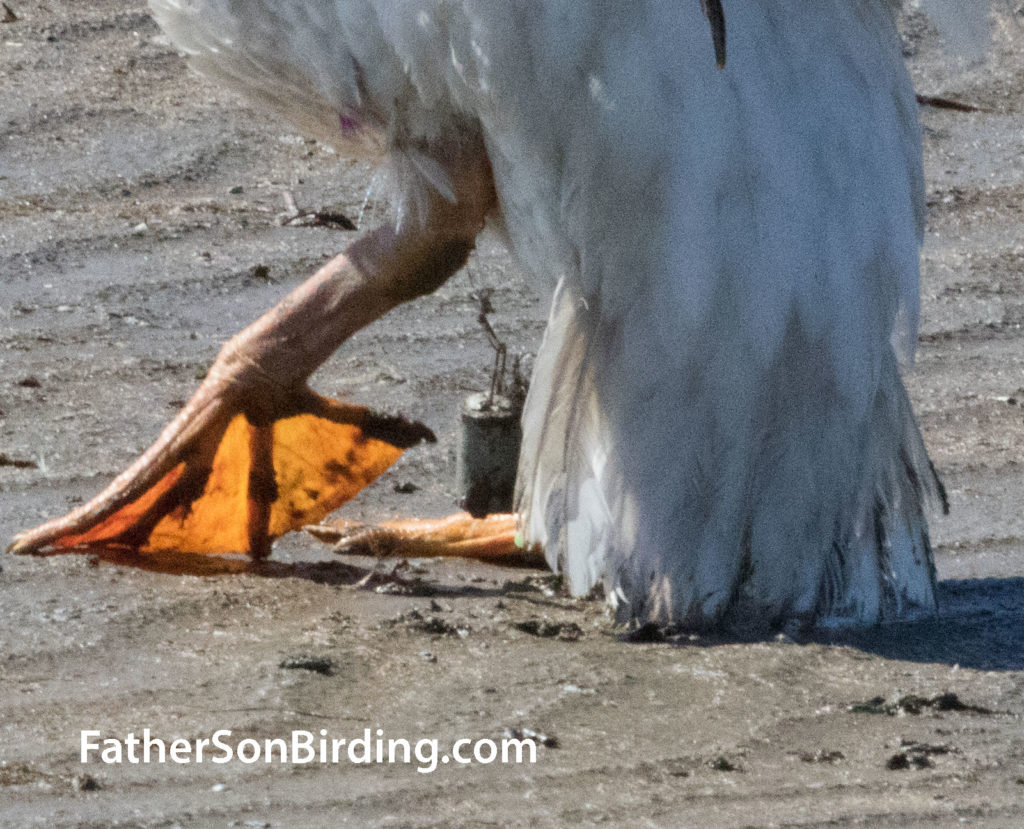
“Unfortunately, we see it all too often,” HAS’s Pete Deichmann told me after freeing the pelican of fishing line and hooks. “Shorebirds and wading birds are particularly susceptible, not only because of the considerable amount of time spent in or near the water, but also the time spent on the ground walking and foraging it is easy to become entangled by a bird’s nest of fishing line.”
Part of me reacted with relief. My—or, precisely, Houston Audubon’s—efforts had at least freed the bird of its nylon shackles. On the other hand, I also knew that it was entirely possible that the pelican might still die. It simply may have been bound for too long and become too weak to resume hunting and feeding itself.
The episode personalized our planet’s plastic problems. Fishing line is just a small—but important—part of a global pollution crisis for birds and other wildlife. We have flooded the oceans with plastic of all kinds. Even if it doesn’t entangle seabirds, they consume it—often with deadly consequences. To learn more, please check out websites such as that of the Plastic Pollution Coalition. Just as important, take action by supporting groups such as Houston Audubon that are on the front lines of dealing with and raising awareness about this critical issue. I also urge anyone reading this to reduce their use of plastic bags, straws, fishing line, etc… We will not be able to recycle our way out of this crisis, but by reducing our consumption of plastics, we might make headway.
Please share this post 🙂
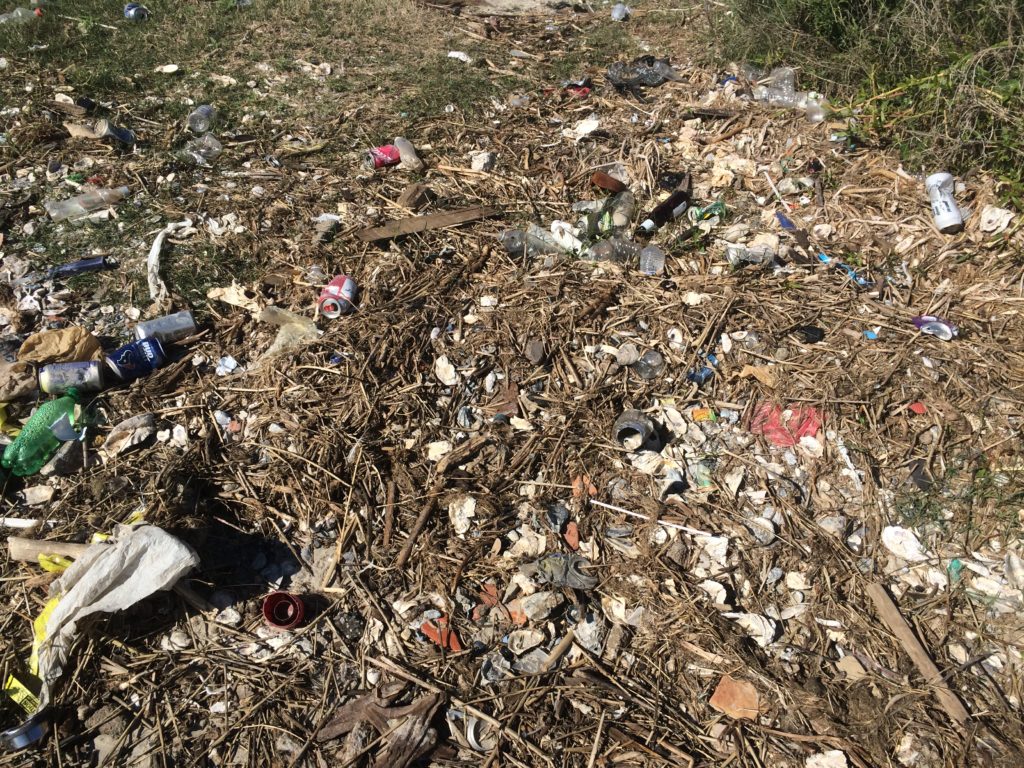
According to a recent PBS broadcast, humans have created more than 9 billion metric tons of plastic to date. In the U.S., we recycle less than 10% of what we make. The rest ends up in landfills—or beaches such as here on the Bolivar Peninsula.

